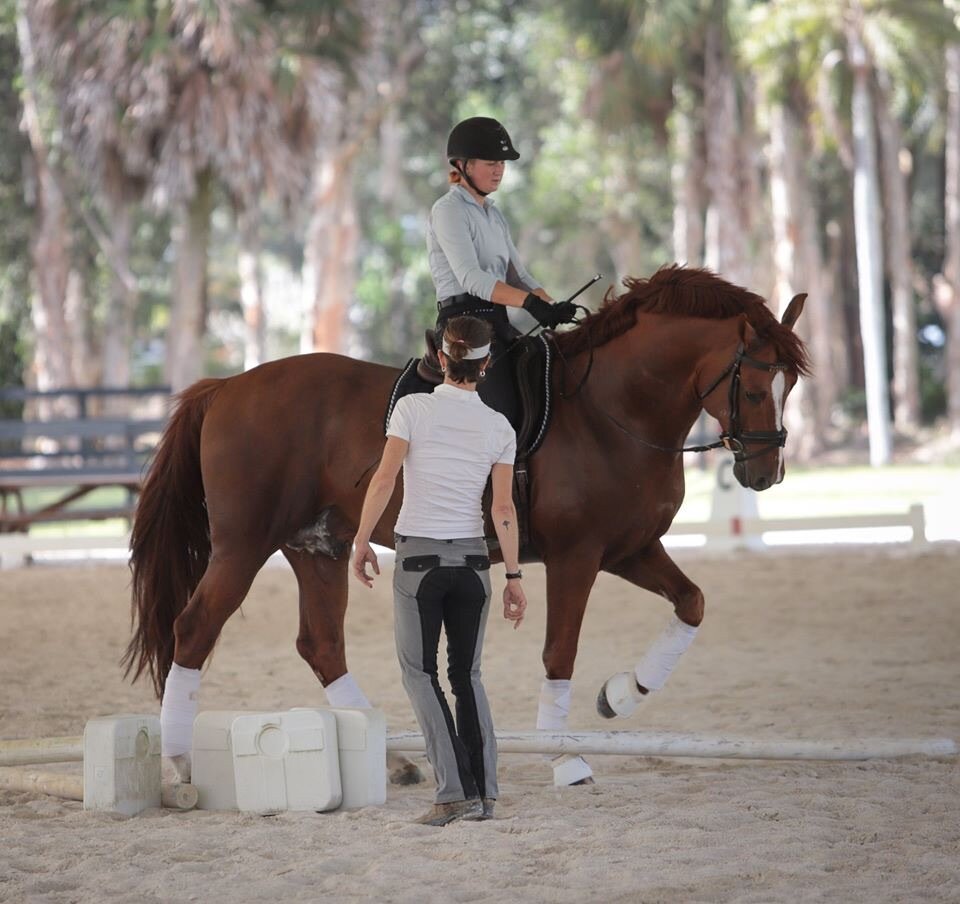A Horse in Pasture: how fit is he actually?
Horses that live mostly in pasture give many riders the false assumption that they are primed for all kinds of exercise. On its own, this lifestyle does not create the physiological adaptations that translate to riding and training fitness, which I’ll explain below. But, first of all give yourself a pat on the back, because a horse with plenty of turnout IS undeniably healthier. When you look out your window and see your horse cantering across the field, go ahead and smile. Do not, however, draw the conclusion that he is automatically capable of sustaining a balanced canter around the arena with you aboard.
Horses move around their pastures with random bursts of internally motivated energy. These spurts differ from externally dictated movement in a number of ways. Here are the most basic ones.
Neuromuscular Coordination
Carrying out an activity for any length of time beyond a couple of minutes requires a well-grooved pattern of nerve signals triggering the same muscles with consistent impulse. The sensory nerves communicate the position of joints and limbs to the central nervous system and the motor nerves, meanwhile, send stimulus to the muscles needed to keep moving them. These pathways of communication do not automatically exist. They develop over a period of training and conditioning, one that lasts at least six weeks. Until then, a horse’s best effort under saddle will be inconsistent moments of decent movement. These moments will likely be sporadic and unsustainable.
Muscle Contractions
For a horse to maintain his own balance with a rider on top, he must engage a certain amount of isometric muscle contraction in the muscles of the neck and hindquarters. These contractions are needed to stabilize his spine and pelvis while he moves and carries a rider. An isometric contraction is defined as a muscle tensioning while holding its normal length. By nature, a horse’s muscular system is not designed very well for these kinds of contractions. As a prey animal, the horse’s muscles evolved to favor short bursts of energy to run from a predator and then stop moving. Keeping a muscle under sustained pressure, as is the case of the neck muscles when trying to support the stability of an unfit horse’s back carrying a rider, builds up burning irritation of nerve endings. The metabolic waste generated as the muscle tries to work through this pools up, stagnates, and causes soreness.
Over time, a horse’s muscles can be improved to hold isometric contractions, as in the body posture required of high level dressage horses, but this does not happen without conditioning.
Cell Metabolism
Over the course of this conditioning, muscles become more adapted to utilize calcium and magnesium (along with other elements) to generate contraction-relaxation cycles efficiently. They also improve their ability to flush out lactate and waste byproducts that realist from burning glycogen for fuel. Meanwhile, as plasma volumes increase in the conditioned horses, there is a greater delivery of blood and oxygen to muscles to support these functions. Furthermore, sustained exercise delivered by a conditioning program increases the mitochondria in cells, the little structures referred to as “power plants” that deliver the energy for muscles to contract. As mitochondria density improves, muscles can work more efficiently for longer periods of time.
The Takeaway
A pastured horse definitely has advantages when it comes to the speed with which he will make conditioning gains compared to a mostly stabled horse. Above all, the flexibility and tone of his back will be in far better shape. This is due to being able to wander around with a lowered neck position all day, which positively tractions the ligament system that stabilizes and engages his back in a healthy posture. This also facilitates greater mobility between vertebrae and helps eliminate the crowding of vertebrae that leads to stiffness and discomfort. Other areas of his body are also apt to be more mobile, like his ribcage and neck. Likely, the added movement in his daily life will also lead to heightened proprioception and a more “awake” nervous system that will make quicker adaptations to conditioning. These adaptations are not immediate, though. And it is especially worth remembering that any demands of stamina or endurance on a muscle must be developed over time. Horses evolved for short spurts of sporadic movement, which does not translate to sustained balanced movement with a rider aboard.




